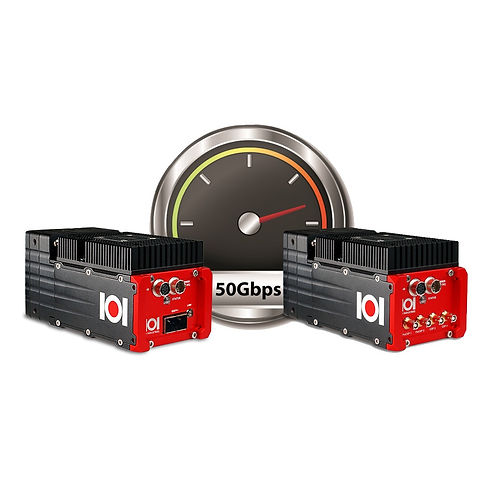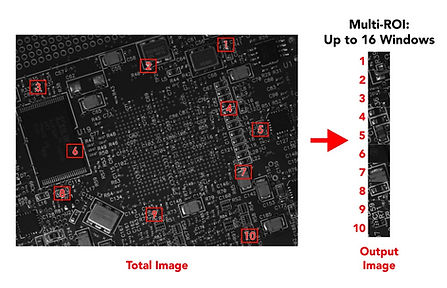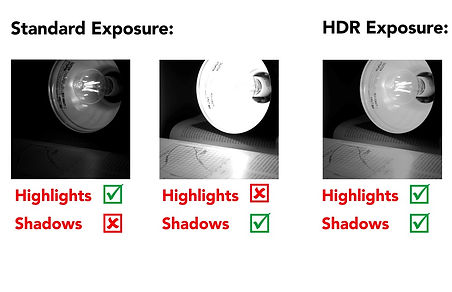
REDWOOD
FEATURES
HIGH RESOLUTION AND HIGH FRAME RATE

The Redwood™ series is a family of high-throughput industrial video cameras designed with some of the fastest and highest-resolution global shutter CMOS image sensors available today. These include the 10MP Gpixel GSPRINT4510, the 5MP and 21MP Gpixel GSPRINT4521, the 12.6MP ams CMV12000, the 44.7MP OnSemi XGS45000, and the 65MP Gpixel GMAX3265. These offer a range of frame rates and different image format capabilities, with different pixel designs to meet your optical requirements. Both monochrome and color camera models are available to suit a variety of applications in industrial and scientific imaging, wide area observation, as well as virtual reality and special effects.
ADVANCED GLOBAL SHUTTER SENSORS
The CMOS image sensors used in the Redwood camera series feature global shutter capability. Global shutter means all pixels across the sensor capture light during the same period of time. In contrast, sensors which use a rolling shutter technique will stagger the start of exposure throughout the rows of the image. This leads to motion artifacts in fast-moving scenes, as well as uneven frame illumination if bright flashes occur partway through the exposure period. At the pixel level, global shutter capability is implemented through in-pixel circuitry, however as pixel sizes are decreased to allow higher resolutions, too much in-pixel circuitry reduces the pixel’s sensitivity. The advanced image sensors in the Redwood camera series use advanced designs and fabrication techniques to minimize in-pixel circuitry, providing top-quality high-resolution images of fast-moving objects without motion artifacts.


HIGH SPEED DIGITAL VIDEO OUTPUTS
CoaXPress is a high-bandwidth digital video interface. High-speed and high-resolution images can be transmitted reliably over long distances through single or multiple coaxial cables, or fiber optic cables for very long distance applications. Developed as a next-generation standard for the machine vision industry, CoaXPress serves many advanced imaging applications across many markets. CoaXPress combines high-speed serial link technology and low-cost cabling to form a bidirectional full-duplex communication path between video sources (ie. cameras) and video receivers (ie. frame grabbers or DVRs). Using coaxial connections, power can be delivered to the camera as well, eliminating the need for a power source at the camera’s location. With advancements in image sensor technology, a high-performance interface is needed to allow the full bandwidth of these sensors to be utilized. The throughput limits of existing video interfaces such as 1-10 GigE Vision, USB3 Vision, and even Camera Link are easily eclipsed by the bandwidth of sensors such as those used in the Redwood camera series. Additionally, system designers using cameras with these interfaces are faced with limitations regarding cable length, robustness, complexity, and cost. The Redwood cameras are available with either four coaxial outputs, each capable of 12.5Gbps data rate, or an equivalent-rate CoaXPress-over-Fiber optical output.
Learn more about CXPoF from Euresys.
MULTI-ROI READOUT, SUBSAMPLING AND BINNING FEATURES
Several image formatting and manipulation features are provided in the feature set of the Redwood camera series. For inspection applications, a single camera can be used to provide highly detailed images of a wide area, but if known regions of interest (ROI) within the field of view are the only portions needing to be inspected, the camera’s multiple-ROI readout feature can minimize the data needing to be transferred to the processing system. Depending on the model of Redwood camera, up to 16 separate non-overlapping window areas can be created, and a composite image of those regions is transmitted from the camera rather than the entire sensor image. This helps increase the camera’s maximum frame rate, as the sensor will skip rows above, between and below the defined ROIs. Other features allow for optimizing the camera’s output data rate in different ways. Subsampling (pixel skipping) allows the full field of view to be transmitted at a lower resolution, but at higher frame rates. Binning and Averaging (digital, off-sensor) allow for optimization of the sensitivity or signal-to-noise ratio of the delivered images.

HIGH DYNAMIC RANGE

The Redwood camera series feature advanced sensor configurations that offer several options for optimizing how much dynamic range of a scene can be captured in each image. Standard exposure mode is available with 8, 10, or 12-bit depth, and a selection of on-camera look-up tables (LUTs) can apply gamma and other contrast-adjusting adjustments. In addition, certain models support high dynamic range exposure modes to further extend the imaging capabilities of the cameras. In standard exposure mode, operators must decide the exposure time to be used, and the gain to be applied, for all pixels in the sensor for each exposure. In situations with high dynamic range scenes, these fixed settings can result in limited shadow or highlight details. Different HDR exposure modes with dynamic adjustment capabilities are available depending on the features of each sensor, including piecewise multi-slope exposure mode, interleaved exposure mode, and dual-ADC gain mode. Through these features, operators can produce images with more dynamic range than what standard exposure mode could capture. With either on-camera or post-processed image fusion tools, final images can be produced with greatly increased intra-frame dynamic range.
